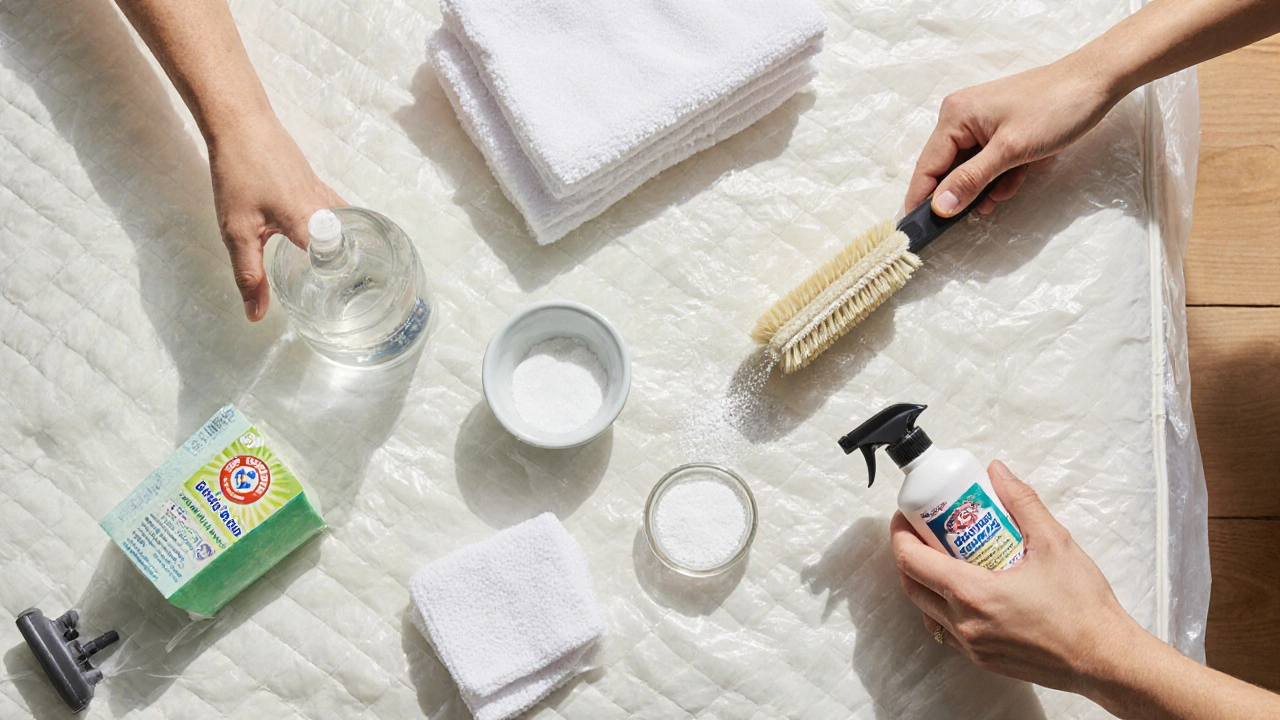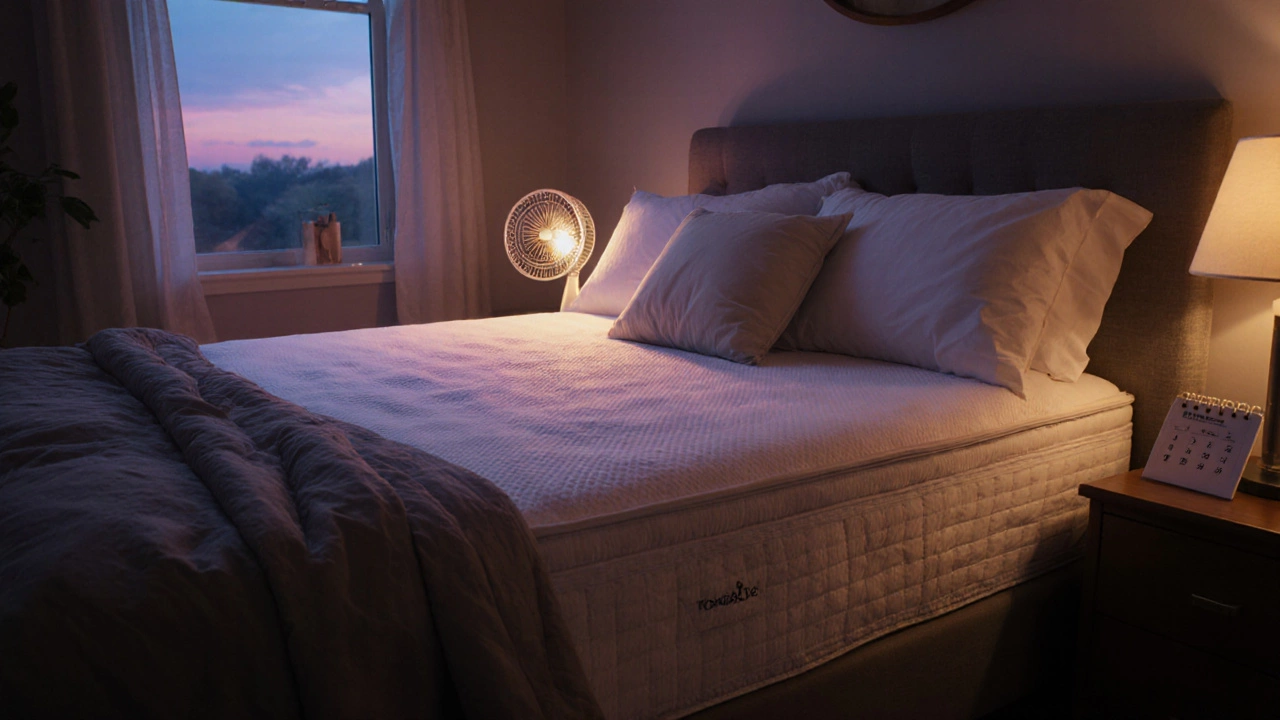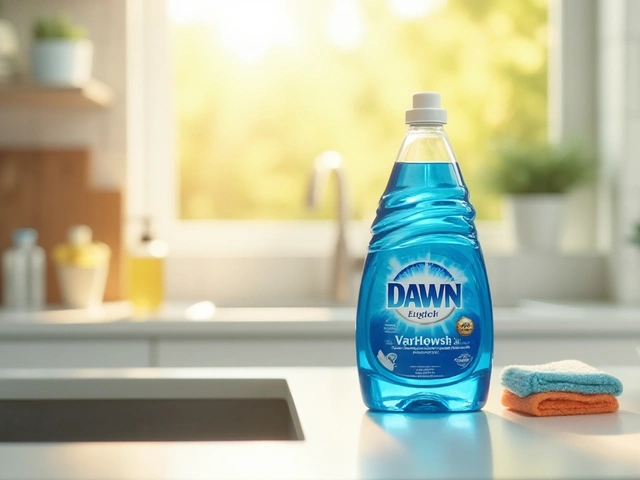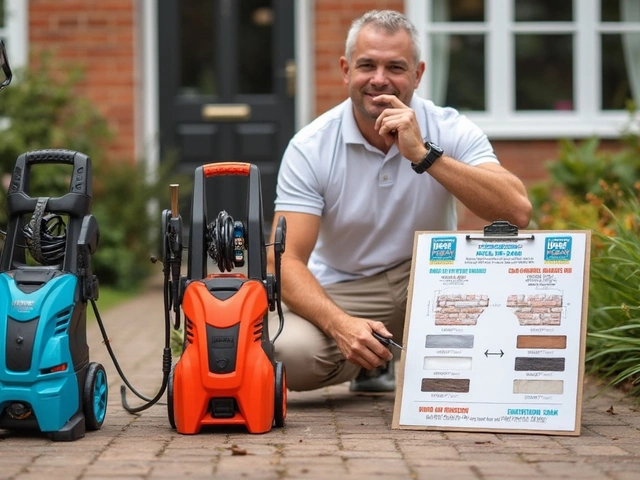Urine Stain Removal Calculator
Calculate Best Solution
Select your stain characteristics to get personalized cleaning recommendations based on the article's expert guidelines.
Recommended Solution
Instructions:
When a urine accident lands on your mattress, the stain and smell can feel like an impossible problem. The good news? You don’t need a pricey cleaning service or harsh chemicals to bring your bed back to fresh. Below is a practical, step‑by‑step method that works for kids, pets, or surprise leaks - all while keeping the process safe for you and the environment.
What Urine stain removal is and why it matters
Urine is mostly water, but it also contains urea, creatinine, and salts. When it seeps into a mattress, those compounds break down into ammonia, which creates that stubborn odor. If left untreated, the stain can set, the smell can linger, and even invite mold growth.
Understanding your Mattress
A modern mattress is a layered system of foam, springs, and fabric. The outer cover is usually removable, but the inner cores can be tricky to dry. Knowing the construction helps you choose the right cleaning method and avoid over‑wetting the inner layers.
Why urine stains are a nightmare
- Proteins in urine bind to foam, making the smell hard to eradicate.
- Ammonia spikes the pH, which can damage delicate fabrics.
- Moisture left inside the core can lead to mold within days.

What you need before you start
- Clean, white cotton towels or microfiber cloths (absorbent and non‑abrasive).
- Baking soda - natural deodorizer.
- White distilled vinegar - neutralizes alkaline urine.
- Hydrogen peroxide (3%) - lifts stains without bleaching.
- Enzyme‑based cleaner (e.g., Nature’s Miracle) - breaks down urine proteins.
- Spray bottle, small bowl, and a soft‑bristled brush.
- Vacuum with upholstery attachment.
- Plastic sheet or tarp to protect the floor.
Step‑by‑step guide
- Act fast. Blot the wet area with a dry towel. Press firmly; do not rub, or you’ll push urine deeper.
- Strip the mattress cover if it’s removable. Wash it in cold water with a mild detergent. Air‑dry fully before putting it back.
- Mix a solution of 1 part white vinegar to 2 parts water in a spray bottle. Lightly mist the stained spot - you want it damp, not soaking.
- Let the vinegar sit for 5-7 minutes. This lowers the pH and stops the odor from setting.
- Sprinkle a generous layer of baking soda over the treated area. The soda will absorb moisture and neutralize any lingering smell.
- Leave the baking soda for at least 30 minutes, preferably an hour. For deep stains, you can let it sit overnight.
- Vacuum the dried baking soda thoroughly. Use the upholstery nozzle to pull out all the powder from the foam surface.
- If the stain or odor persists, apply an enzyme cleaner. Follow the product’s instructions - usually a light mist, wait 10‑15 minutes, then blot with a clean towel.
- For stubborn discoloration, dab a mixture of 2 teaspoons hydrogen peroxide, 1 tablespoon baking soda, and a few drops of mild dish soap. Apply with a soft brush, work gently, then blot dry.
- Allow the mattress to air‑dry completely. Position a fan nearby or open windows. The core should be no more than 10% damp before you replace bedding.
- Finally, protect the cleaned area with a waterproof mattress protector. This barrier stops future accidents from reaching the foam.
Choosing the right cleaner - quick comparison
| Solution | Key ingredient | Effectiveness on protein stains | Odor neutralisation | Safety for foam |
|---|---|---|---|---|
| Vinegar & water | Acetic acid | Medium | High | Excellent - low pH |
| Baking soda | Sodium bicarbonate | Low | High (absorption) | Excellent - no moisture |
| Enzyme cleaner | Protease enzymes | Very high | High | Good - follow dilution guidelines |
| Hydrogen peroxide mix | H2O2 | Medium | Medium | Fair - avoid over‑saturation |

Pro tips and common pitfalls
- Test first. Spot‑test any liquid on an inconspicuous corner to ensure it won’t discolor the fabric.
- Never soak the mattress. Excess water can turn the inner foam into a sponge for mold.
- Use white towels only - colored cloths can bleed onto the mattress.
- Apply cleaners in thin layers; thickness prevents proper drying.
- If you have a memory‑foam mattress, skip the hydrogen peroxide mix - it can degrade the foam over time.
Keeping the mattress fresh after cleaning
Maintenance is easier than repeat emergencies. Here are a few habits that keep odors at bay:
- Rotate the mattress every three months - this distributes wear and lets any hidden moisture evaporate.
- Use a breathable, waterproof protector. Look for “breathable” in the product description, not just “waterproof”.
- Air out the bed weekly. Open windows and let sunlight hit the surface; UV rays naturally kill bacteria.
- Sprinkle a thin layer of baking soda on the mattress surface once a month, vacuum after 15 minutes. It freshens without chemicals.
When to call a professional
If the urine has seeped into the inner core (you feel a persistent damp spot), or the odor remains after two DIY attempts, it’s time to get a specialist. Professional services have extraction machines that pull moisture from deep layers and can apply industrial‑strength enzyme treatments safely.
Can I use bleach to remove urine stains?
Bleach is too harsh for most mattress materials. It can degrade foam and cause yellowing. Stick to enzyme cleaners or a vinegar‑baking soda combo for safe results.
How long should I let the cleaning solution sit?
For vinegar, 5‑7 minutes is enough. Baking soda needs at least 30 minutes, preferably an hour. Enzyme cleaners usually require 10‑15 minutes to break down proteins.
Will the smell ever return?
If the mattress was thoroughly dried and you used an enzyme cleaner, the odor should be gone. Persistent smells indicate hidden moisture, which means more drying or professional help.
Is it safe to use these methods on a mattress with a memory‑foam layer?
Yes, as long as you avoid excess liquid. Memory foam is especially vulnerable to saturation, so use a misting spray and blot quickly. Skip the hydrogen peroxide mix for memory‑foam tops.
How often should I clean my mattress?
A deep clean once a year is enough for most households. Spot‑clean accidents immediately, and vacuum weekly to remove dust and skin flakes.




